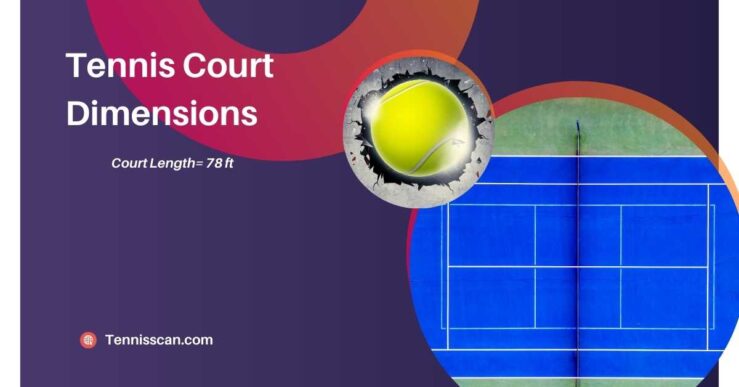A great option to stay active all year long is to install a tennis court in your home. It’s crucial to have the proper size tennis court dimensions in your home if you want to play like a pro or even nurture a child’s potential from an early age.
Tennis courts are roughly the same size everywhere, and many people construct them at a size that is comparable to professional tennis courts. However, if you desire a smaller court for Touch Tennis or just casual play, you can have one. A conventional size court will work, though, if you want a traditional court where you can play singles and doubles.
Although there are a few smaller courts that have been installed for “Touch Tennis” or for leisure play, all ATP and ITF courts are the same size. But what exactly are a tennis court’s measurements? Let’s look at it.
Tennis Court Dimensions
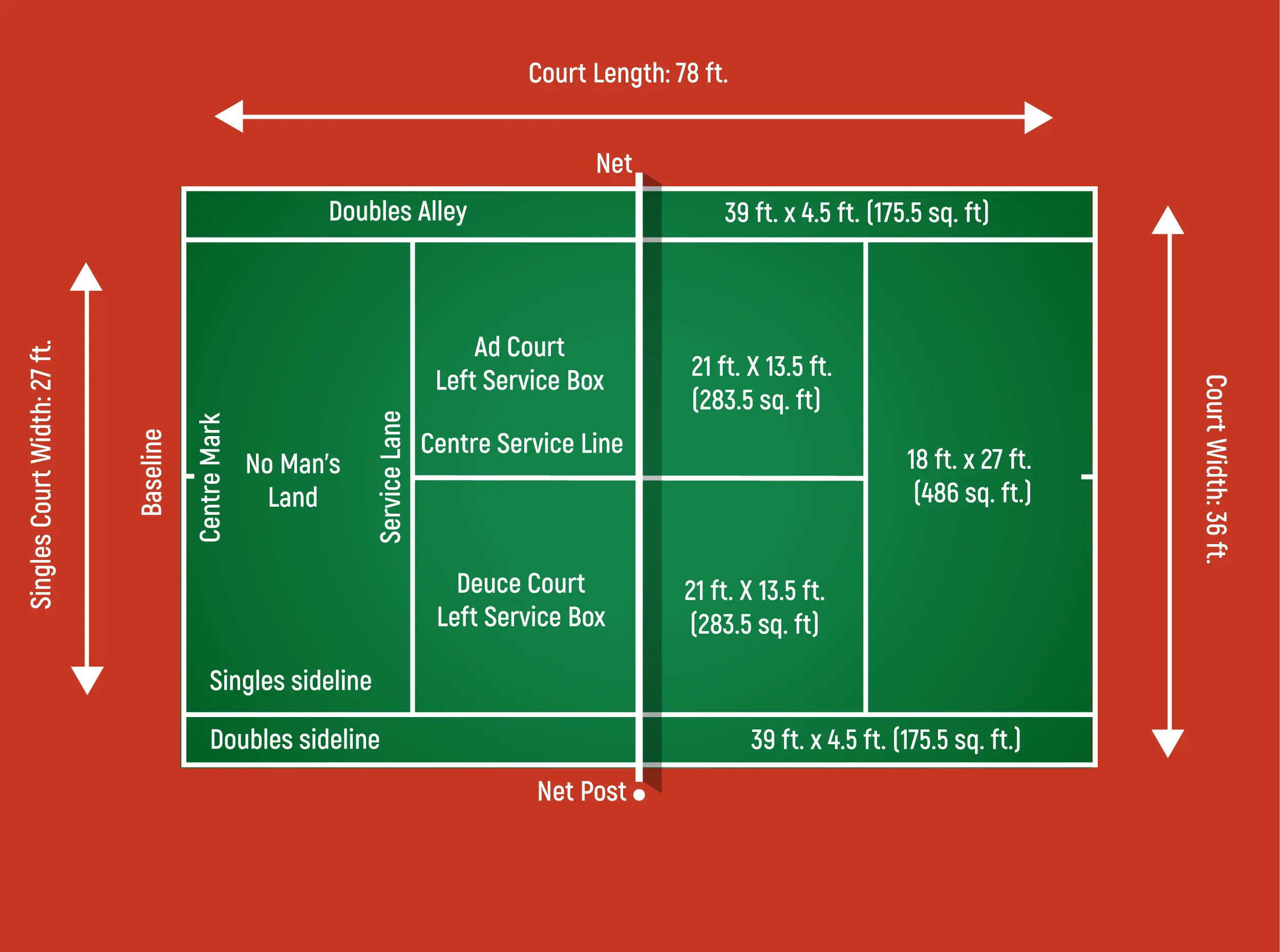
The International Tennis Federation (ITF) establishes the standards for tennis courts’ dimensions and measurements. Whether playing solo or doubles, tennis courts come in different sizes. While doubles tennis employs the entire court width out to the outside or doubles sidelines, singles tennis employs the inner sidelines to determine an out-of-play shot.
Tennis courts are 2,808 square feet, or 78 feet × 36 feet, in size. However, only doubles matches are played on the entire court. The singles court is 2,106 square feet or 78 feet by 27 feet. Let’s examine each of the many aspects that make up a court one at a time. A standard tennis court for adults has the following measurements. What is A Let in Tennis?
Base: 36 feet (Doubles) / 27 feet (Singles)
A baseline is a line that a player serves from. On both sides, it is the boundary that is most remote from the net and runs parallel to it. Most forehand and backhand shots are made from a baseline, which is also used for serving.
Even if you’re playing singles or doubles, the amount of baseline varies. The addition of the so-called “doubles alleys” allows for more space as there are two players on each side of the court when playing doubles.
4 inches from the center
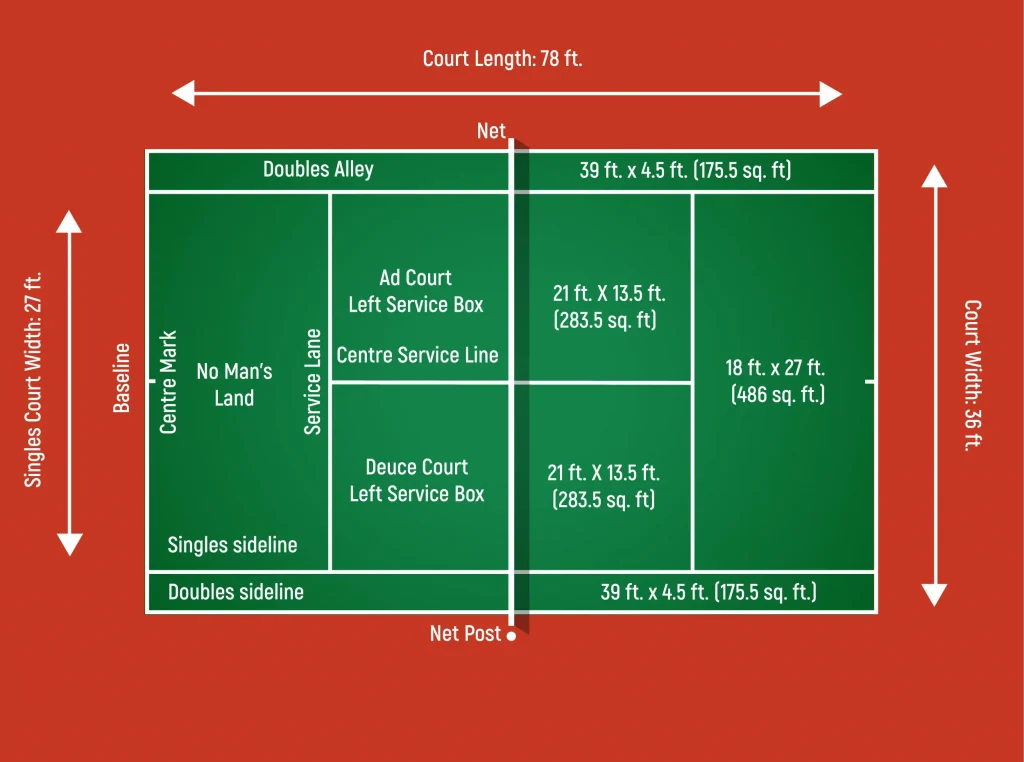
The center of a baseline is known as the center mark. It is orthogonal to the net. When striking a serve in ad court or the deuce, you cannot touch on either side of the center mark, which is a signal for serving. This is the idea your coach has in mind when instructing you to rush toward the center.
27-foot service line
Although baselines only go up to 36 feet, the service line and baselines are comparable. As a result, the service line is shorter than the baseline whether you are playing singles or doubles because you can only serve from inside the sidelines on each side. Once you have served, you may use the full baseline.
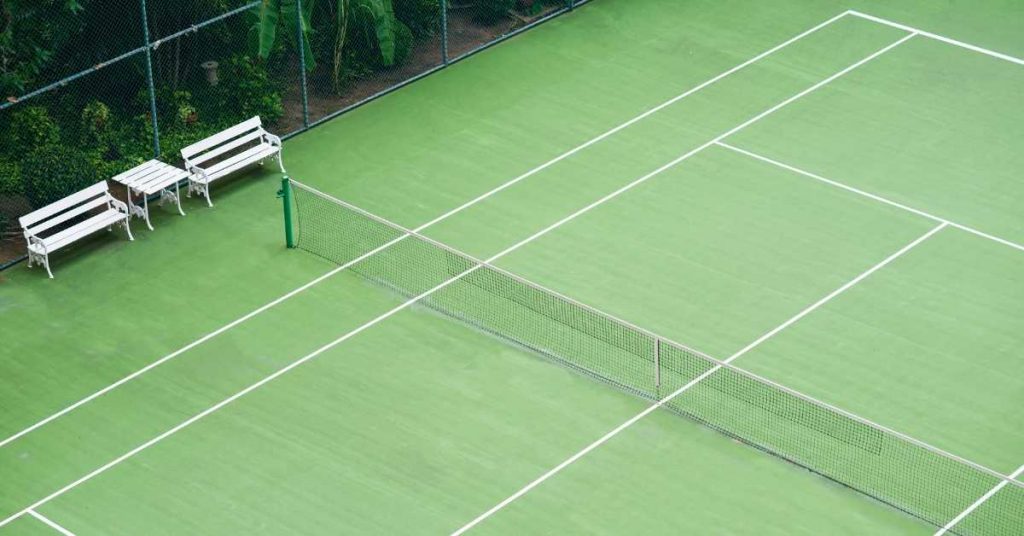
39 feet Sideline
Both the singles and doubles competition sidelines are 39 feet long. In singles matches, they serve as the boundary and run perpendicular to the net. As a result, every shot that crosses the line is regarded to have failed (Out). However, in a doubles tournament, you are allowed to use the entire baseline and sidelines.
18 x 27 feet is “No Man’s Land”
If you’re new to the sport, you’ve probably heard coaches screaming, “Get out of the no man’s land!” The biggest box on the court, as seen in the diagram above, is located here in the middle of the baseline and service line. It places you in a difficult situation, which is why it is known as a No Man’s Land. Due to your poor positioning, you are unable to hit a groundstroke or volley.
Checkout What Does Open Era Mean in Tennis
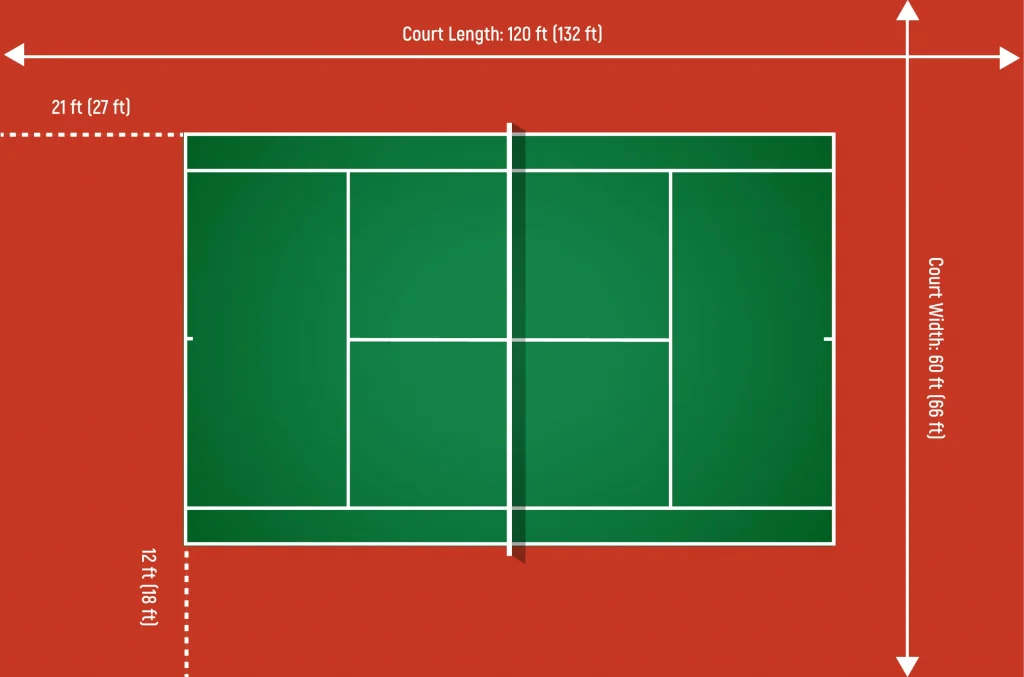
Area of Tennis Court
21 feet by 13.5 feet for the left and right service boxes (283.5 square feet)
The left and right service boxes are made up of two identical boxes that are generated by the central service line.
Doubles Lane: 39 feet by 4.5 feet (175.5 square feet)
The doubles alley may be found between the singles and doubles sidelines.
18 feet by 27 feet: No Man’s Land (486 square feet)
When you first start playing tennis, you’ll undoubtedly hear someone cry, “Get out of No Man’s Land,” referring to the biggest box on the court that lies between the service line and the baseline. Generally speaking, you should generally stand in this spot because you’ll be too close to the net to make a good groundstroke and too far away to make one.
Tennis Court Layout
Every professional tennis court has a total surface area of 2808 square feet or 78 feet by 36 feet. However, only the doubles tournament, as previously indicated, makes use of the full court. Because the sides or doubles alley do not constitute a part of the playing surface for the singles tournament, the court’s playable area is 78 feet by 27 feet or 2106 square feet.
Service Area
On either side of the net, the service area is divided into two rectangles by a center service line. These regions stand-in for the area where the served ball must land. Both singles and doubles matches use the same-sized areas.
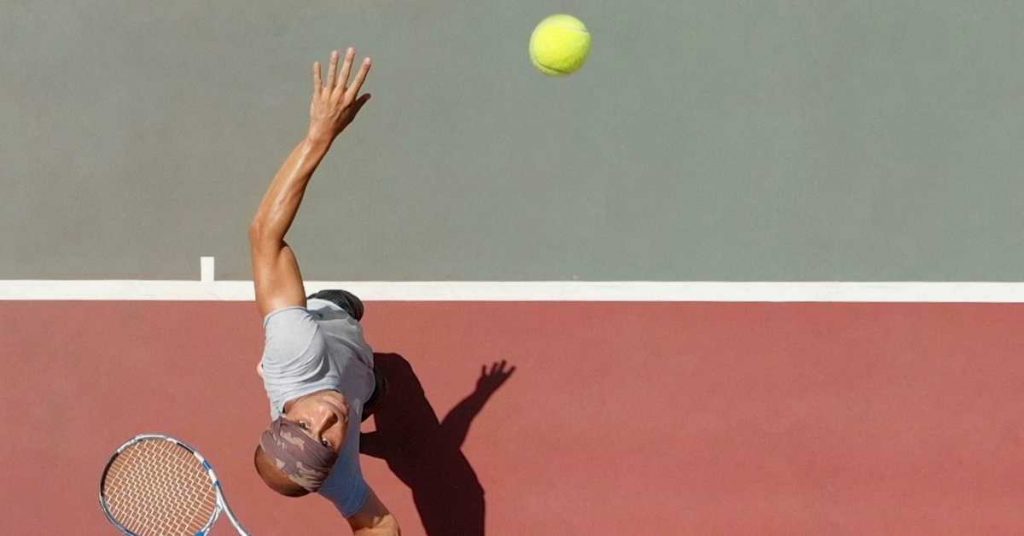
Location of the service line: 21 feet (6.4 meters) away from the net. 13.5 feet broad by 21 feet long is the size of the service area (4.1 meters wide x 6.4 meters long).
Tennis Net Size
A Tennis court is evenly divided by a tennis net that spans its width. On both sides of the court, poles are used to support the net. The weight of the net causes its center point to be about 6 inches lower than its height at the posts.
For singles and doubles matches, the net posts are placed 91 centimeters (3 feet) outside the sideline. Height of tennis court net at posts: 3 feet, 6 inches (1.07 meters), 3-foot tennis court net height in the middle (.91 meters).
Read More About Singles Tennis Rules
Misconceptions about Tennis Court
The size of a tennis court used in professional competitions never changes. The distinction between singles and doubles tennis courts is a source of confusion for many tennis newcomers. The size of the court is unchanged overall.
Tennis courts are the same for both singles and doubles matches. The playable area does, however, vary in size. The Doubles Alleys cannot be used in singles.
Tennis Court Size with Fence
Player overruns necessitate additional room around the court’s sidelines and baseline. The suggested amount of space that must be left clear around the court is as follows.
- 120 feet (37 meters) is the length of the court plus the necessary open space.
- Including the necessary clean area, the court is 60 feet (18 meters) wide.
For kids, smaller tennis courts Children under 10 can learn tennis more effectively on smaller courts with slower orange, red, and green balls, according to the ITF.
The dimensions of these courts are as follows:
- Under-10-year-old children orange courts: 59 feet (18 meters) long by 21 feet (6.4 meters) broad.
- Under-8-year-old children red courts: 36 feet (11 meters) long by 18 feet (5.5 meters).
